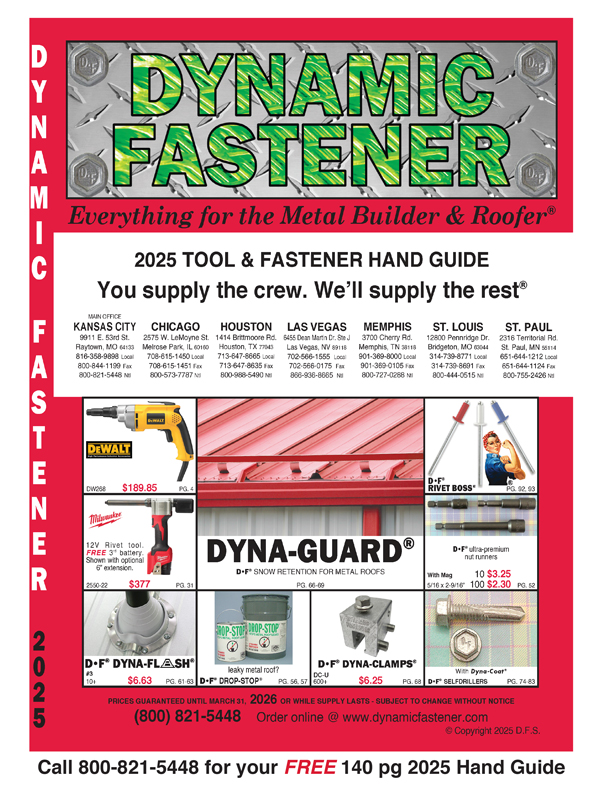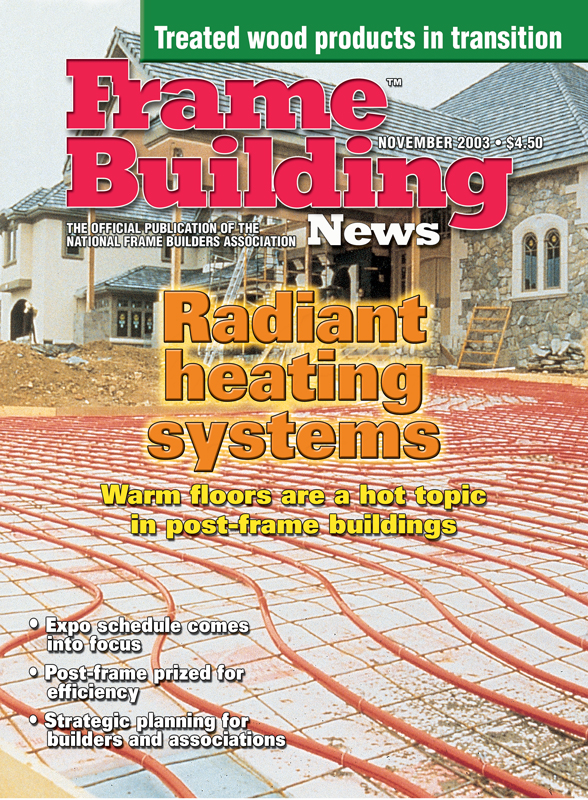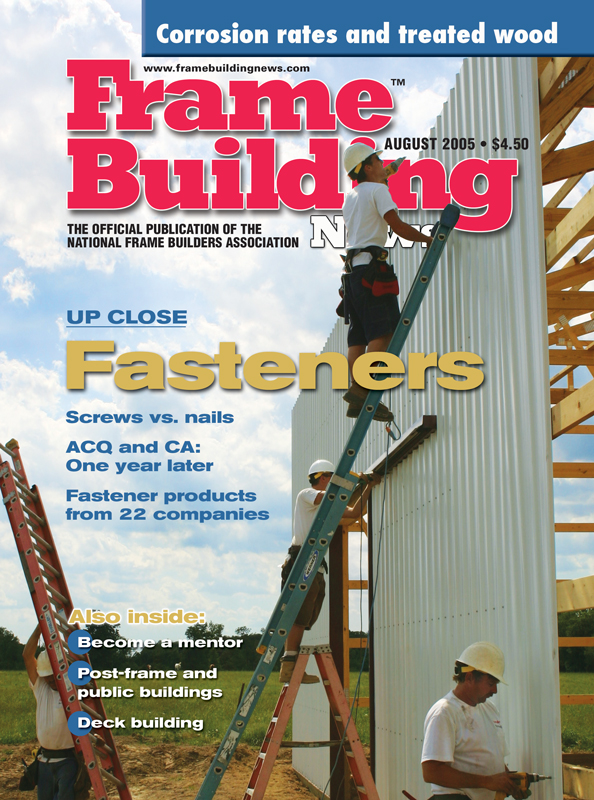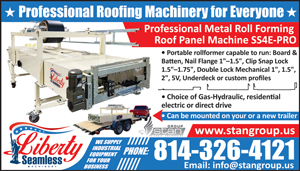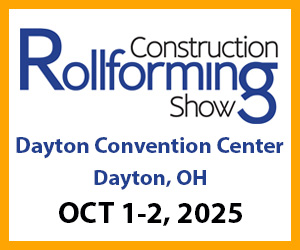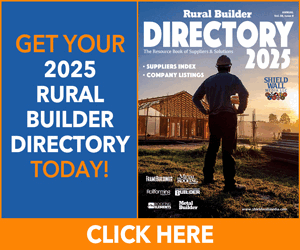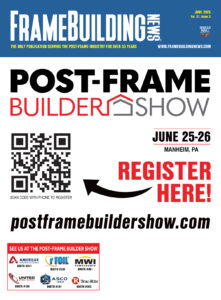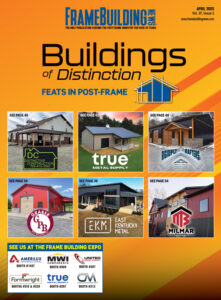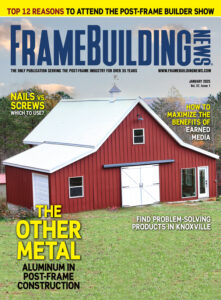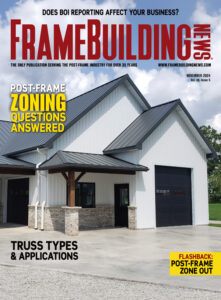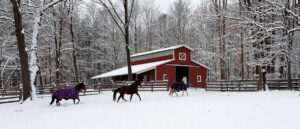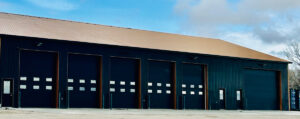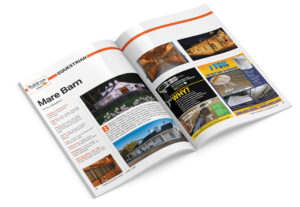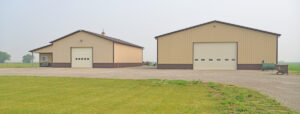Manufacturers’ recommendations for minimizing corrosion in preservative-treated lumber
Below is a list of recommendations from building component manufacturers regarding ways to minimize corrosion that may be caused by the new generation of treated wood. NFBA does not endorse the recommendations below, nor is the list exhaustive; they are a sample of the many recommendations in our industry.
American Building Components
ABC strongly recommends that when attaching panels to ACQ treated lumber:
1. Use stainless steel fasteners to attach panels, clips, or other accessories to treated wood.
2. Do not allow direct contact between treated wood and metal panels or trims.
3. Do not allow water to drain off of treated wood onto panels or flashing.
AJ Manufacturing
AJ Manufacturing advises builders to place a barrier between door and window jambs and the new generation of treated wood products, using a florescent yellow label on the carton warning of the dangers of placing the product on wood treated with a copper-based preservative. The warning label reads: “CAUTION If this product is being installed next to a copper-based wood preservative (ACQ, Copper Azole) a barrier must be installed between the treated lumber and this product to prevent a reaction between the metal and the preservative.”
The company also sells a barrier material the builder can use to protect against the corrosion called “Deck Flash Barrier,” a flexible polyethylene waterproof flashing and barrier with a rubberized asphalt mastic adhesive,” manufactured by CoFair Products.
2025 Update: AJ Manufacturing no longer sells the barrier material. Still being invested in the success of builders, they still recommend using a barrier.
Ag-Co
The BlackBoot all-in-one Post Protector & Footing Form from Ag-Co creates a foundation-strength base for post-frame buildings. Molded from durable polyethylene, each one-piece unit provides uplift protection and a way to pour footings and position posts with one easy-to-use form. It also provides a barrier between the wood column and any soil moisture or decay organisms, resulting in a design where the less corrosive borate-treated “blue” posts or even untreated posts can be used.
Grace Construction Products
Simpson Strong-Tie conducted research on Grace Construction’s barrier products. When Grace Vycor Deck Protector is properly applied as a barrier between pressure-treated wood and galvanized connectors, it helps restore the corrosion rates of these connectors to levels historically seen with CCA. For interior (dry) applications (including foundation sill plates and supporting roof ledgers in the wall and ceiling cavities), standard G-90 galvanized connectors may be used in conjunction with Grace Vycor Deck Protector and pressure-treated wood. For exterior applications, Grace Vycor Deck Protector may also be used in conjunction with G-185 connectors for additional corrosion resistance.
Maze Nails
2025 Update: 1. Maze Nails guarantees that all STORMGUARD® Nails are Hot-Dipped Galvanized in compliance with ASTM Specification A-153. Additionally, Maze fasteners undergo a double-dipping process in molten zinc through our exclusive STORMGUARD® method, offering exceptional corrosion resistance for typical inland applications. These fasteners come with a lifetime warranty against red rust for projects not exposed to salt spray. For environments with severe corrosion, we recommend using our stainless-steel fasteners.
2. Type 304 stainless steel nails provide a high degree of corrosion resistance for ground contact or below-ground applications that are subject to higher levels of moisture from rain, drainage or concealed areas that do not dry thoroughly.
3. Type 316 stainless steel nails provide the highest degree of corrosion resistance for severely corrosive environments such as those within 5 miles of the seacoast or other marine environments.
Perma-Column
Perma-Column is a concrete replacement for the portion of posts that would be in ground contact on a post-frame building, to which untreated wood is bracketed above ground. This avoids using copper-based treated columns, but ACQ, CA, or other ground contact-treated wood may be required for skirtboard. Perma-Column recommends a stainless steel split-drive fastener to connect the skirtboard to the concrete column.
Plasti-Sleeve
Plasti-Sleeve is a one-piece molded plastic sleeve with an enclosed bottom designed to fit posts cleanly while still allowing ventilation. Plasti-Skirt is a heavy duty U-shaped plastic cover for skirtboards, which provides a positive barrier between corrosive treated woods and metal trims and siding (corrosion-resistant fasteners would still be required). Some builders have used untreated or borate-treated wood with Plasti-Sleeve and Plasti-Skirt, eliminating copper and its corrosive effects.
2025 Update: The Plasti-Sleeve product line now includes 22 specialized sizes for Plasti-Sleeve, our economical Short-Sleeve post protector, and Plasti-Skirt, an easy to use plastic skirt board/grade plank protector. All of which are made in the USA.
Post Protector
2025 Update: Post Protector and Skirt-Board Protector offer an affordable and attractive solution to separate post-foundations from ground contact and exposure to the environment, while preserving in-ground strength and protecting steel from corrosive chemicals.
Postsaver (GreenPost)
2025 Update: GreenPost (formerly Postsaver) is a fully code approved and industry accepted non-toxic, environmentally-friendly barrier for both treated and untreated lumber to provide protection from decay and termites for below-ground post applications. The vulnerable area of the post is coated with waterproofing emulsion and shrink-wrapped with a heavy-duty polyethylene. The heat-shrinking process ensures a secure application to protect post below ground.
With juvenile and faster growing timbers introduced to the industry treaters have told us there are new challenges for treatments as they struggle to get penetration of treatment into the increased heartwood areas of the timbers. Unlike historically having slow growth/tighter growth ring timber the industry now has new challenges in protecting posts from rot and decay.
Trufast
As a result of research and performance tests, Trufast confidently recommends the following Trufast fasteners as compatible for ACQ-treated wood applications and guarantees their performance under the conditions of the standard Trufast fastener warranty:
1. All Trufast roofing fasteners with Tru-Kote, including drill point, thread point, purlin fasteners, spikes, fluted nails, and concrete fasteners.
2. All Trufast SIP panel fasteners with Tru-Kote.
3. Trufast LCS low profile and ClipMate clip screws with TEC-17 and TEC-17+.
4. Trufast Pantite screws with TEC-17 and TEC-17+.
In addition to the above fasteners, Trufast also offers 300 series stainless steel fasteners.
Wheeling Corrugating
The results of a study funded by Wheeling found that the use of water and ice shield material was most effective in preventing a corrosive reaction between any of the steel products tested and either type of pressure-treated lumber (see photos).
Effectively, there was no surface damage where the water/ice shield contacted the metal or painted surfaces. The use of 30-pound roofing felt was somewhat effective in minimizing the corrosion of the various steel products, but did not appear to offer substantial improvement over direct metal to wood contact. Direct contact with the pressure-treated lumber grades had the anticipated effect of corrosion on both the galvanized products and two of the painted steel materials in that the paint and the base steel were damaged by direct contact with the treated lumber. FBN
(2005) Editor’s note: NFBA staff, at the request of the Editorial Review Committee, asked post-frame supplier companies to identify and to provide information for products or practices that reduce the potential for connector and fastener corrosion. NFBA, its officers, board members, committee members, and staff are not responsible for statements made regarding product performance, nor do they personally nor does the association itself seek to endorse or recommend use of specific products by publication of this list. Any opinions are those of the companies listed and not those of NFBA or the publishers by fact of publication.



